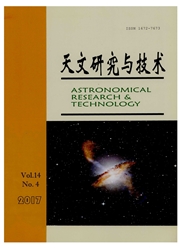

 中文摘要:
中文摘要:
一级甲醇微波激射是为在整个宇宙的恒星形成的调查的重要工具。最近,为在向年轻星的宾语的样品的 95 GHz 转变的一级甲醇微波激射的一系列调查被承担了。这些调查导致了大约 200 新一级甲醇微波激射的察觉并且在我们的星系把已知的一级甲醇微波激射的数字与他们增加了的以前的观察相结合到 ~ 400。从在一级甲醇微波激射排放和联系天体物理学的宾语之间的关系的分析,一级甲醇微波激射排放的紧张密切与 1.1 公里 Bolocam 星群的飞机调查(BGPS ) 灰尘连续统来源的性质和流出性质被相关,这被显示出。这进一步支持一级甲醇微波激射 collisionally 在震惊的区域被抽并且激动的假设。把观察基于这些, BGPS 目录是可能的为指向进一步的一级甲醇微波激射搜索提供更可靠的样品,这能被推断。为向 BGPS 的一件更大的尺寸样品的一级甲醇微波激射的新调查采购原料测试这当前是在进行之中的。为在银河系外的来源检测一级甲醇 megamasers 的前景被讨论,并且组成第一敏感搜索的观察被建议了。
 英文摘要:
英文摘要:
Class I methanol masers are important tools for investigations of star formation throughout the Universe. Recently, a series of surveys for class I methanol masers at the 95 GHz transition toward samples of young stellar objects have been undertaken. These surveys have resulted in the detection of about 200 new class I methanol masers and combined with previous increased the number of known observations they have class I methanol masers in our Galaxy to ~400. From analysis of the relationship between class I methanol maser emission and associated astrophysical objects, it has been shown that the intensity of the class I methanol maser emission is closely correlated with the properties of the 1.1 mm Bolocam Galactic Plane Survey (BGPS) dust continuum sources and outflow properties. This further supports the hypothesis that class I methanol masers are collisionally pumped and excited in shocked regions. Based on these observations, it can be inferred that the BGPS catalog is likely to provide more reliable samples for targeting further class I methanol maser searches. A new survey for class I methanol masers toward a larger size sample of BGPS sources to test this is currently underway. The prospects for detecting class I methanol megamasers in extragalactic sources is discussed, and observations constituting the first sensitive search have been proposed.
 同期刊论文项目
同期刊论文项目
 同项目期刊论文
同项目期刊论文
 期刊信息
期刊信息
